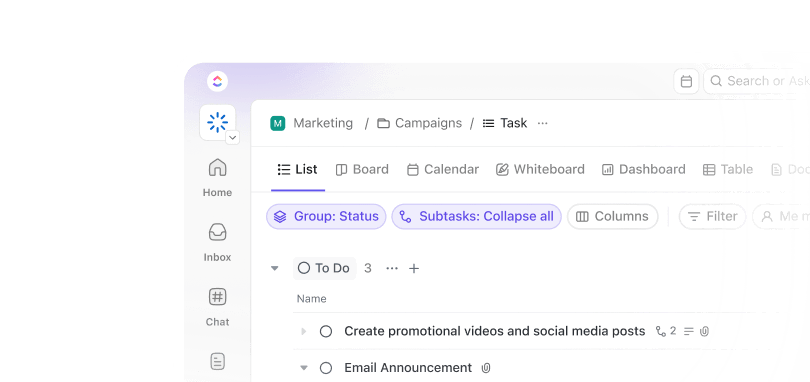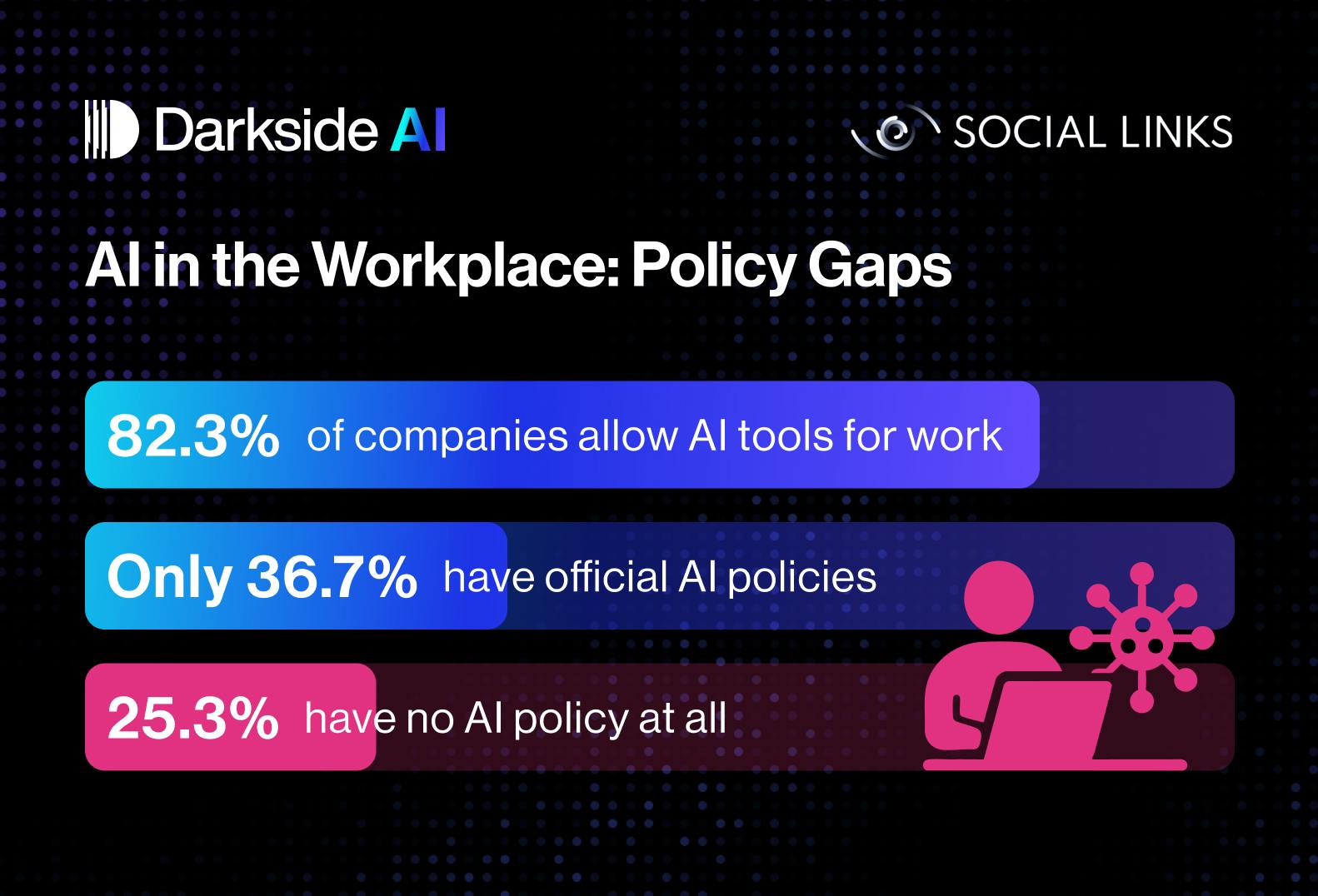IT teams often find themselves juggling too many projects with too few resources. Priorities shift, budgets stretch thin, and teams scramble to put out fires instead of focusing on strategic growth. The result? Missed deadlines, wasted investments, and projects that never deliver real value.
Tracking initiatives in spreadsheets or scattered tools leads to silos, duplication, and poor decision-making.
IT portfolio management helps you see the big picture, allocate IT resources wisely, and ensure every project aligns with business goals. Instead of reacting to problems, you gain a structured, strategic way to drive progress.
Let’s discover how to implement it effectively.
How to Implement Effective IT Portfolio Management
⏰ 60-Second Summary
- IT portfolio management helps businesses plan, track, and manage IT projects, resources, and investments for better decision-making
- Key components include infrastructure, project, and application portfolios, IT financial management, risk management, and strategic alignment
- Implementing IT portfolio management begins with setting a clear strategy, linking IT investments to business objectives, setting up a project pipeline, and continuously monitoring progress
- Effective best practices include focusing on high-impact projects, introducing changes gradually, and ensuring effective resource management
- A structured IT portfolio streamlines collaboration between IT and other departments, ensuring smoother workflows
- Businesses can gain a competitive edge by anticipating tech shifts and ensuring IT investments drive long-term success
- simplifies IT portfolio management by offering templates, dashboards, and automation to track projects effortlessly
What Is IT Portfolio Management?
Information technology portfolio management is a structured way for businesses to plan, track, and manage their IT projects, resources, and investments. It helps organizations make informed decisions, reduce costs, and ensure their IT efforts align with business goals.
In the past, IT projects were often managed in silos, making it difficult to track budgets, prioritize initiatives, or measure impact. The process was mostly about tracking IT projects. Today, the portfolio management process focuses on managing applications, maintaining infrastructure, mitigating risks, and planning for future technology needs.
🧠 Did You Know? In 2002, Chris Verhoef’s study, Quantitative IT Portfolio Management, reshaped the way executives handle IT budgets. His research helped organizations with multi-billion-dollar IT budgets make better decisions and effectively manage their technology investments!
Importance of IT Portfolio Management
Think about it—how many tools, applications, and projects are running in your company right now?

Without a clear system in place, you could be paying for underutilized software, maintaining outdated systems, or funding projects that no longer align with business goals. IT portfolio management helps you audit your IT investments, eliminate redundancies, and cut unnecessary costs so you can focus on what truly matters.
When IT teams operate in silos, miscommunication leads to duplicated work, missed deadlines, and stalled projects. A structured portfolio approach keeps teams aligned by providing visibility into priorities, progress, and dependencies so that work moves forward without unnecessary roadblocks.
And then there is security. Scattered IT assets create gaps and result in cyber threats like data breaches, malware, and unauthorized access. An IT portfolio gives you full visibility into your infrastructure. You can track software lifecycles, monitor security updates, and enforce compliance standards timely.
Instead of guessing which projects deserve attention, IT portfolio management gives you a comprehensive view of their costs, benefits, and risks. This helps the project management office leadership make informed decisions about which initiatives to prioritize, which to restructure, and which to retire, to drive measurable business outcomes.
Project Portfolio Management vs. IT Portfolio Management
While both deal with managing resources and investments, Project Portfolio Management focuses on overseeing a collection of projects, ensuring they’re aligned with business goals, prioritized, and delivered on time. It’s project-specific and prioritizes execution efficiency.
On the other hand, IT Portfolio Management (ITPM) takes a broader approach, handling everything related to IT—applications, infrastructure, resources, and systems. It focuses on long-term IT strategy, ensuring technology investments support business growth, reduce risk, and optimize costs.
Key Components of IT Portfolio Management
IT portfolio management allows you to coordinate projects, optimize software and hardware resources, and ensure every investment is worth it. Instead of constantly fixing what’s broken, you can take a strategic approach, synchronize technology with your goals, and get the most out of your IT assets.
Here is how it all comes together:
1. Infrastructure portfolio
This covers all the foundational elements of IT (hardware, networks, security systems, policies, and the teams responsible for keeping everything operational). It includes managing assets, connectivity, storage, and system maintenance.
🌟 Why it matters: A strong infrastructure portfolio keeps IT systems efficient and reliable by preventing downtime with proactive monitoring and redundancy planning. It optimizes resource allocation to reduce waste, cuts unnecessary costs by eliminating redundancies, and frees IT teams to focus on innovation instead of constant troubleshooting.
2. Project portfolio
This portfolio manages all IT projects, from system upgrades and cloud migrations to security enhancements and software implementations. It tracks project timelines, budgets, and alignment with business priorities, ensuring that resources are allocated efficiently.
🌟 Why it matters: Keeping projects on track prevents budget overruns, missed deadlines, and misaligned priorities. A well-managed project portfolio helps teams focus on the most impactful initiatives, allocate resources wisely, and ensure IT projects deliver real business value.
3. Application portfolio
The application portfolio catalogs all the software and digital tools a company uses, from enterprise applications to productivity tools. It assesses their effectiveness, compatibility, and cost-efficiency to determine whether they still serve the business’s needs.
🌟 Why it matters: Many businesses pay for redundant or underutilized software, leading to wasted resources. Tracking applications eliminates unnecessary expenses, improves efficiency, and ensures every tool supports company goals.
📮 Insight: Low-performing teams are 4 times more likely to juggle 15+ tools, while high-performing teams maintain efficiency by limiting their toolkit to 9 or fewer platforms. But how about using one platform?
As the everything app for work, brings your tasks, projects, docs, wikis, chat, and calls under a single platform, complete with AI-powered workflows. Ready to work smarter? works for every team, makes work visible, and allows you to focus on what matters while AI handles the rest.
4. IT financial management portfolio
This portfolio tracks IT spending, resource allocation, and financial planning. It provides insights into operational costs, software licensing, infrastructure investments, and return on IT expenditures.
🌟 Why it matters: IT costs can escalate without proper oversight. Keeping financial management in check helps control spending, reduce waste, and maximize the return on technology investments.
✨ Fun Fact: In the early ‘70s, IT departments were seen as extensions of traditional business departments. It wasn’t until technology advanced that they needed their own management style.
5. Risk management
The risk management portfolio focuses on identifying and mitigating IT risks, such as cyber threats, compliance issues, outdated systems, and potential data breaches. It includes security protocols, contingency planning, and compliance monitoring.
🌟 Why it matters: Cyberattacks, data breaches, and system failures can lead to financial and reputational damage. A proactive approach to risk management strengthens security, protects sensitive data, and ensures compliance with industry regulations.
6. Data & information management portfolio
This portfolio governs how data is collected, stored, protected, and used within an organization. It includes data security, privacy policies, compliance regulations, and access management to ensure data integrity.
🌟 Why it matters: A well-maintained data portfolio ensures reliable information access by organizing and structuring data for easy retrieval while implementing security measures to protect against breaches. It safeguards privacy through encryption, access controls, and compliance with regulations like GDPR.
7. Vendor and third-party management portfolio
Managing relationships with external IT vendors, cloud providers, and software suppliers falls under this portfolio. It includes contract negotiations, performance tracking, and security assessments to ensure third-party services meet business requirements.
🌟 Why it matters: Relying on third-party services introduces risks like security vulnerabilities, unexpected costs, and service disruptions. Strong vendor management ensures reliable partnerships, better contract negotiations, and minimized operational risks.
8. Strategic alignment portfolio
This portfolio connects IT initiatives with business goals to ensure that technology investments directly support growth, efficiency, and innovation. It includes long-term planning, digital transformation strategies, and IT-business collaboration.
🌟 Why it matters: A strategic alignment portfolio ensures IT drives business success by focusing on efficiency, cost reduction, and customer-centric digital solutions. It prioritizes high-impact projects, automates business processes, and fosters cross-functional collaboration to anticipate business needs. This proactive approach prevents waste, accelerates innovation, and keeps technology aligned with growth.
Benefits of IT Portfolio Management
IT project management enables informed decisions that support business growth and long-term success. Proper IT portfolio management offers control, ensuring everything is planned, tracked, and coordinated with business goals. And that is just the start—let’s look at what else it brings to the table:
1. Makes innovation manageable
New technologies emerge all the time, and while they can be exciting, rolling them out the wrong way can create chaos.
IT portfolio management helps you introduce new tools and systems in a structured manner so your business can innovate without wasting money or running into unnecessary risks. You get the benefits of new tech without the headaches.
2. Brings clarity to budgets and timelines
Ever wondered why certain IT projects drag on for months or why budgets keep inflating?
IT portfolio management provides full transparency into spending, timelines, and progress, so there are no surprises. It also makes it easier to track where money is going and hold teams accountable for delivering results.
3. Enhances collaboration between IT and other departments
Information Technology does not operate in a bubble; it supports every part of the business. Without proper coordination, teams in finance, marketing, or operations might struggle to get the IT support they need.
IT portfolio management aligns projects with business-wide priorities, improving coordination and streamlining workflows across departments.
4. Manage IT talent and resources effectively
IT departments are often stretched thin. A lack of visibility into workloads and key tasks can leave some teams overwhelmed while others have idle resources.
IT portfolio management helps balance workloads, allocate resources more efficiently, and directs skilled IT professionals toward the highest-impact tasks.
5. Prepare your business for technology shifts
Technology moves at lightning speed.
IT portfolio management helps identify outdated systems, highlight essential upgrades, and make sure IT strategies evolve with your company’s needs. You won’t be scrambling to catch up; you’ll be prepared for whatever comes next.
How to Implement IT Portfolio Management
Managing a technology portfolio can feel like juggling a lot of moving parts. But what if you had one portfolio management software that could pull everything together?
Work today is broken. We spend 60% of our time sharing, searching for, and updating information across disconnected tools. Our projects, documentation, and communication are scattered across systems that drain productivity rather than enhance it.
solves this problem by combining project management, knowledge management, and team communication in one platform, accelerated by next-generation AI automation and search.
By creating a single source of truth for all work management, doesn’t just organize your technology portfolio—it transforms how your entire organization collaborates, communicates, and delivers results.
Here’s how to implement IT portfolio management using :
1. Lay the groundwork with a business strategy
IT portfolio management is more than keeping track of projects. It’s about making technology work for your business, not against it. Rather than managing a scattered mix of tools and initiatives, you want to create a system where all strategic objectives can be met.
- Spot inefficiencies and roadblocks: Are there outdated tools draining resources? Redundant project portfolio management software creating confusion? Talk to different teams to uncover what’s working—and what’s not.
- Prioritize what matters: Eliminate underused tools and shift budgets toward high-impact projects that actually support business growth
- Set up a portfolio governance team: Bring together IT, finance, and operations leaders to oversee key decisions, risk assessment, and resource allocation effectively
💡 Pro Tip: Instead of tracking projects manually, use the Project Management Portfolio Template to monitor initiatives across all departments. It gives you a real-time view of project health, progress, and performance—all in one place.
2. Align IT investments with business goals
Now that you’ve sorted your strategy, the next step is making sure each investment is pushing your business forward. Here are a few ways to make this happen:
- Connect IT projects to business objectives: Every project should support a core goal, like boosting efficiency, enhancing customer experience, or increasing revenue. If it doesn’t, it’s worth asking if it belongs in the portfolio
- Establish a decision-making framework: A governance team with IT and business leaders can help prioritize projects, allocate resources wisely, and ensure IT investments align with company-wide priorities
- Set clear performance metrics: You can’t improve what you don’t measure. Whether it’s system uptime, cost savings, or compliance rates, tracking the right KPIs helps you see what’s working (and what’s not). Brain, ’s powerful AI assistant, can help you identify the top KPIs for IT projects as per your requirements


Measuring performance is equally important for understanding how well your projects align with your goals. Key performance indicators (KPIs) provide insight into how well your IT initiatives are progressing and delivering value.
💡 Pro Tip: The KPI Template helps you quickly set up and track success metrics. It keeps your focus on what matters, making it easy to monitor performance and make sure your IT investments contribute to your company’s success.
3. Set up a project pipeline
Planning is one thing; keeping IT projects moving smoothly is another. Missed deadlines, stalled tasks, and confusion over priorities can throw everything off course. The trick? Setting up a structured project pipeline where tasks flow in the right order, and nothing gets stuck waiting for the next step.
For this, you need to make dependencies crystal clear. Task Dependencies lets you link dependent tasks together, so it’s easy to see what needs to happen first. If something shifts, related tasks update automatically, saving you the hassle of manually adjusting everything


- Keep everything in one place: Juggling multiple tools or scattered spreadsheets makes it harder to track progress. A centralized system gives teams full visibility, so everyone knows what’s next and what’s holding things up. Use 15+ Views to track IT projects the way you want—from Forms for tool requisitions to Kanban boards for monitoring progress stages in a network infrastructure upgrade
- Automate updates and adjustments: IT projects rarely go exactly as planned. When timelines change, your system should update dependencies for you, preventing delays and last-minute scrambles
Besides this, the Portfolio Management Template creates a centralized space for managing projects efficiently.
Teams can use it to:
- Build structured workflows: Define tasks, milestones, and dependencies so everyone knows exactly what to do and when
- Track performance effortlessly: Monitor cost, progress, and risk levels in real time, reducing last-minute reporting scrambles
- Automate check-ins and reminders: Stay proactive with scheduled performance reviews and alerts to catch potential roadblocks early
📮 Insight: Clear communication is also crucial for keeping projects on track. About 41% of professionals prefer instant messaging for team communication. Although it offers quick and efficient exchanges, messages are often spread across multiple channels, threads, or direct messages, making it harder to retrieve information later.
With an integrated solution like Chat, your chat threads are mapped to specific projects and tasks, keeping your conversations in context and readily available without jumping between tools. When something important arises, you can quickly turn messages into tasks, ensuring that action items aren’t lost in email threads.
4. Adapt and improve continuously
IT portfolio management isn’t a one-and-done task—it’s an ongoing effort that requires regular updates. As business priorities shift and new technologies emerge, you must consistently review your IT projects to identify what’s working and what needs adjustment.
Assessing your portfolio dashboard ensures you’re always investing in the right initiatives and making the most of your resources.
- Review performance regularly: Set up routine check-ins to evaluate project progress, resource usage, and business impact. Look at key metrics like system uptime, cost efficiency, and ROI to see what’s working and what needs tweaking
- Gather team feedback: Your IT teams and stakeholders are on the front lines, so their insights are invaluable. Create open channels for feedback to identify roadblocks and opportunities for improvement
- Stay agile with adjustments: If a project isn’t delivering the expected results, pivot early. Whether it’s reallocating budgets, shifting priorities, or tweaking strategies, staying flexible helps you avoid wasted effort and maximize impact
- Use real-time tracking: Keeping an eye on your IT portfolio in real-time makes it easier to spot trends, catch issues before they escalate, and make data-driven decisions. Dashboards can help visualize performance, track progress, and ensure your IT investments stay aligned with business goals


👉🏼 Watch this short video explainer to set up effective project management dashboards:
Best Practices for Effective IT Portfolio Management
IT portfolio management helps you take a strategic view of managing the many activities involved in both planned and ongoing projects. Let’s explore some best practices to get you started as an IT project portfolio manager and accelerate your business toward strategic growth.
1. Prioritize projects based on impact
Not all IT initiatives deliver the same value. Some projects boost revenue, others enhance security, and some drain resources without clear benefits. Instead of spreading budgets and teams too thin, focus on initiatives that align with business objectives.
- Identify which projects improve efficiency, reduce costs, or drive innovation
- Rank them based on urgency, potential ROI, and resource availability
- Regularly reassess priorities as business needs evolve
Prioritizing the right projects ensures IT investments actually contribute to long-term success. Task Priorities simplifies such task categorization—Urgent, High, Normal, and Low—to ensure your team knows what to work on first.


2. Roll out your strategy in phases
Big changes often come with big risks—workflow disruptions, resistance from teams, and unforeseen technical issues. Testing initiatives on a smaller scale before full implementation helps refine processes and catch problems early.
- Start with a limited rollout in one department or location
- Gather feedback, troubleshoot issues, and fine-tune processes
- Gradually expand implementation once proven effective
Strategic processes manage transitions, minimize disruptions, and ensure smooth adoption without overwhelming teams.
3. Mitigate risks effectively
Cyber threats, compliance failures, and outdated systems can turn into costly disasters if left unchecked. Risk assessment and management should be built into every IT decision, not treated as an afterthought.
- Conduct regular security audits and vulnerability assessments
- Implement backup and disaster recovery plans to minimize downtime
- Stay on top of industry regulations (GDPR, HIPAA, SOC 2) to avoid compliance penalties
4. Optimize resource allocation
IT budgets, time, and skilled professionals are limited, so spending them wisely is crucial. Without proper tracking, resources can be wasted on low-impact tasks while high-priority initiatives suffer.
- Regularly review team workloads and project budget
- Shift resources toward projects that drive the most value
- Use automation to reduce manual work and free up teams for strategic tasks
5. Align IT investments with business goals
Every IT decision, such as upgrading infrastructure or deploying new software, should directly support key business goals like revenue growth, customer satisfaction, and operational efficiency. When IT aligns with business strategy, it drives real value instead of just maintaining systems, preventing wasted investments in ineffective tools and projects.
- Use frameworks like OKRs or Balanced Scorecards to measure IT’s contribution
- Ensure IT leaders collaborate with business executives when making investment decisions
- Establish a governance committee to oversee IT strategies and spending
6. Balance innovation with stability
New technology can offer a competitive edge, but adopting every trend without a clear strategy can lead to compatibility issues and wasted investments. Striking the right balance between modernization and maintaining stable operations is key.
- Run pilot programs to test emerging technologies before full deployment
- Evaluate feasibility, costs, and risks before investing in new tools
- Maintain and optimize legacy systems that still provide value
7. Enforce strong governance and compliance
Regulatory requirements aren’t optional, and failing to meet them can result in fines, security breaches, and reputational damage. Standardize IT policies for enhanced security, accountability, and legal compliance.
- Maintain detailed audit trails and access controls
- Regularly update IT policies to align with industry standards such as GDPR, SOC 2, and HIPAA
- Assign clear ownership of compliance efforts to prevent oversights
Strong governance reduces security risks and ensures IT decisions are transparent, accountable, and legally compliant.
Take Control of Your IT Portfolio with
Your IT department is crucial to your organization’s overall success. When it works efficiently, everything else follows. But managing multiple IT projects can be challenging, especially with outdated tools like scattered, outdated spreadsheets.
Thankfully, tools like make managing your IT portfolio much more efficient. With real-time project tracking, automated workflows, and clear visibility into priorities, you can ensure every IT initiative stays on track and delivers real value.
No more juggling projects in disconnected tools. No more wasted resources. Just a streamlined way to manage your IT portfolio efficiently.
Ready to simplify your IT management? Sign up for !


Everything you need to stay organized and get work done.













